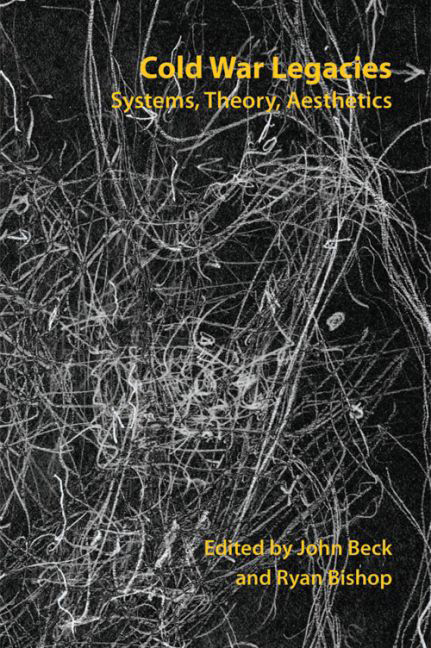Book contents
- Frontmatter
- Contents
- List of Figures
- Series Editors’ Preface
- Acknowledgements
- Notes on Contributors
- Introduction: The Long Cold War
- I PATTERN RECOGNITION
- II THE PERSISTENCE OF THE NUCLEAR
- III UBIQUITOUS SURVEILLANCE
- 8 ‘The Very Form of Perverse Artifi cial Societies’: The Unstable Emergence of the Network Family from its Cold War Nuclear Bunker
- 9 The Signal-Haunted Cold War: Persistence of the SIGINT Ontology
- 10 ‘Bulk Surveillance’, or The Elegant Technicities of Metadata
- IV PERVASIVE MEDIATIONS
- Index
9 - The Signal-Haunted Cold War: Persistence of the SIGINT Ontology
from III - UBIQUITOUS SURVEILLANCE
Published online by Cambridge University Press: 10 May 2017
- Frontmatter
- Contents
- List of Figures
- Series Editors’ Preface
- Acknowledgements
- Notes on Contributors
- Introduction: The Long Cold War
- I PATTERN RECOGNITION
- II THE PERSISTENCE OF THE NUCLEAR
- III UBIQUITOUS SURVEILLANCE
- 8 ‘The Very Form of Perverse Artifi cial Societies’: The Unstable Emergence of the Network Family from its Cold War Nuclear Bunker
- 9 The Signal-Haunted Cold War: Persistence of the SIGINT Ontology
- 10 ‘Bulk Surveillance’, or The Elegant Technicities of Metadata
- IV PERVASIVE MEDIATIONS
- Index
Summary
The Ephemeral SIGINT
The persistence of the signal marks an ephemeral yet material continuity of the Cold War. The war of signals, signal interception, spy stations, cryptology and signal intelligence had intensified since the start of World War I. Wireless cryptography became one focal point of national security during the war; national territories were guarded in signal space too, localised in concrete sites such as Tuckerton, New Jersey, or Nayville, New York, telegraph stations, owned by the German Telefunken. For obvious reasons, it was taken into American control during the war years when suspicions of German military interests over the traffic that fl owed through the 500-foot aerial towers became stronger (see Wythoff 2014).
Thousands of code-breakers and radio interceptors – primarily Europeans – worked towards analyses of what was being said and to what ends, and how the obvious message could be altered with only an addition of an extra gap in patterns of Morse code. In ciphers, the persistence of the word ‘ṣifr’ in Arabic (and also Turkish), meaning ‘zero’, is a reminder of how marking ‘nothing’ becomes essential for coded messaging. The contemporary-seeming ‘nothingness’ of wireless communications that does not allow much in terms of perception of the signals crossing space between enddevices is encased in a longer history of the mathematical nothingness that stands as a key reference point for a media archaeology of the cryptographic world that we sometimes bluntly call in more popular terms ‘digital culture’.
Cryptography was still limited in the early wireless days, a different situation than with the arrival of World War II some twentyfive years later. Cryptography itself of course has a longer history in written forms spanning centuries. But techniques of data analysis were even more strongly tied to the use of machines as ways to process intelligence gathered, signals intercepted. Some years later, with the advent of the Cold War, the situation had changed to one characteristic of any modern technological data situation: dealing with information that was ‘often trivial in quality and overwhelming in quantity’ (Ferris 2010: 167). The air and transmission waves were full of signals anyway, which made even the identification of code from everyday nonsense a task in itself. From the forefront of the hot wars, agencies specialising in this technological epistemology of signals moved to increasingly secret organisations of media analysis.
- Type
- Chapter
- Information
- Cold War LegaciesLegacy, Theory, Aesthetics, pp. 167 - 187Publisher: Edinburgh University PressPrint publication year: 2016



